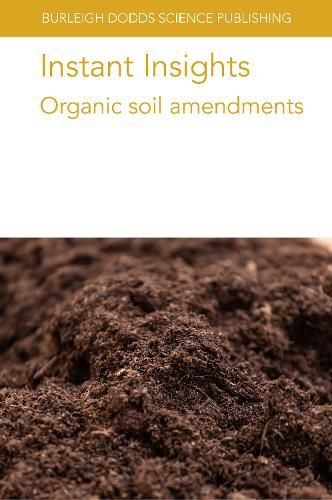Readings Newsletter
Become a Readings Member to make your shopping experience even easier.
Sign in or sign up for free!
You’re not far away from qualifying for FREE standard shipping within Australia
You’ve qualified for FREE standard shipping within Australia
The cart is loading…






This title is printed to order. This book may have been self-published. If so, we cannot guarantee the quality of the content. In the main most books will have gone through the editing process however some may not. We therefore suggest that you be aware of this before ordering this book. If in doubt check either the author or publisher’s details as we are unable to accept any returns unless they are faulty. Please contact us if you have any questions.
This book features four peer-reviewed reviews on organic soil amendments.
The first chapter examines the role of biofertilisers and consortia of microorganisms in improving the effectiveness of organic fertilisation, before moving on to consider the use of animal excrement, including manures, slurry and guano. The chapter also considers the use of products or by-products of both animal and plant origin as fertilisers.
The second chapter provides a critical evaluation of the potential of compost to improve soil health, as well as the sources of variability and potential risks of compost for environmental quality. Two case studies evaluate the trade-offs between benefit and risks in the use of compost in perennial and annual crops.
The third chapter discusses optimising slurry management in agricultural practices and highlights current decision tools for optimising manure management. It also reviews modifying animal slurry pH to enhance its value as a biobased fertiliser through methods such as bio acidification and alkalinisation.
The final chapter provides an overview of the main technologies for manure valorisation into bioenergy and biofertiliser products. It discusses developments in more established technologies such as solid-liquid (S/L) separation, anaerobic digestion and composting, as well as more innovative techniques, including struvite precipitation.
$9.00 standard shipping within Australia
FREE standard shipping within Australia for orders over $100.00
Express & International shipping calculated at checkout
This title is printed to order. This book may have been self-published. If so, we cannot guarantee the quality of the content. In the main most books will have gone through the editing process however some may not. We therefore suggest that you be aware of this before ordering this book. If in doubt check either the author or publisher’s details as we are unable to accept any returns unless they are faulty. Please contact us if you have any questions.
This book features four peer-reviewed reviews on organic soil amendments.
The first chapter examines the role of biofertilisers and consortia of microorganisms in improving the effectiveness of organic fertilisation, before moving on to consider the use of animal excrement, including manures, slurry and guano. The chapter also considers the use of products or by-products of both animal and plant origin as fertilisers.
The second chapter provides a critical evaluation of the potential of compost to improve soil health, as well as the sources of variability and potential risks of compost for environmental quality. Two case studies evaluate the trade-offs between benefit and risks in the use of compost in perennial and annual crops.
The third chapter discusses optimising slurry management in agricultural practices and highlights current decision tools for optimising manure management. It also reviews modifying animal slurry pH to enhance its value as a biobased fertiliser through methods such as bio acidification and alkalinisation.
The final chapter provides an overview of the main technologies for manure valorisation into bioenergy and biofertiliser products. It discusses developments in more established technologies such as solid-liquid (S/L) separation, anaerobic digestion and composting, as well as more innovative techniques, including struvite precipitation.